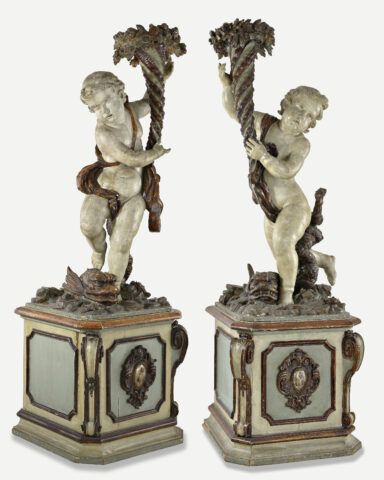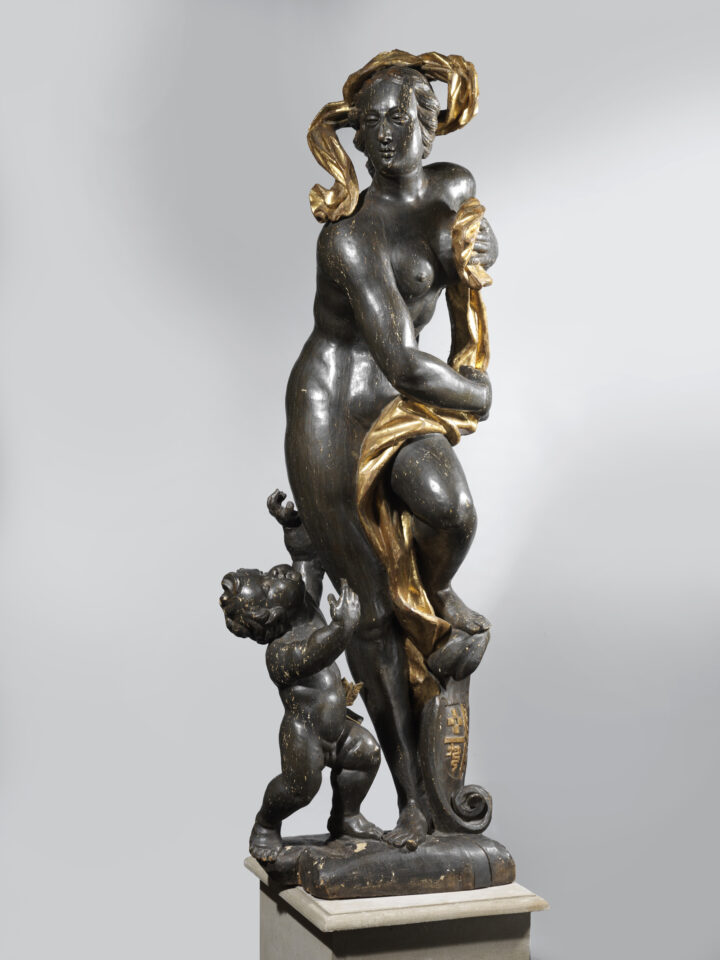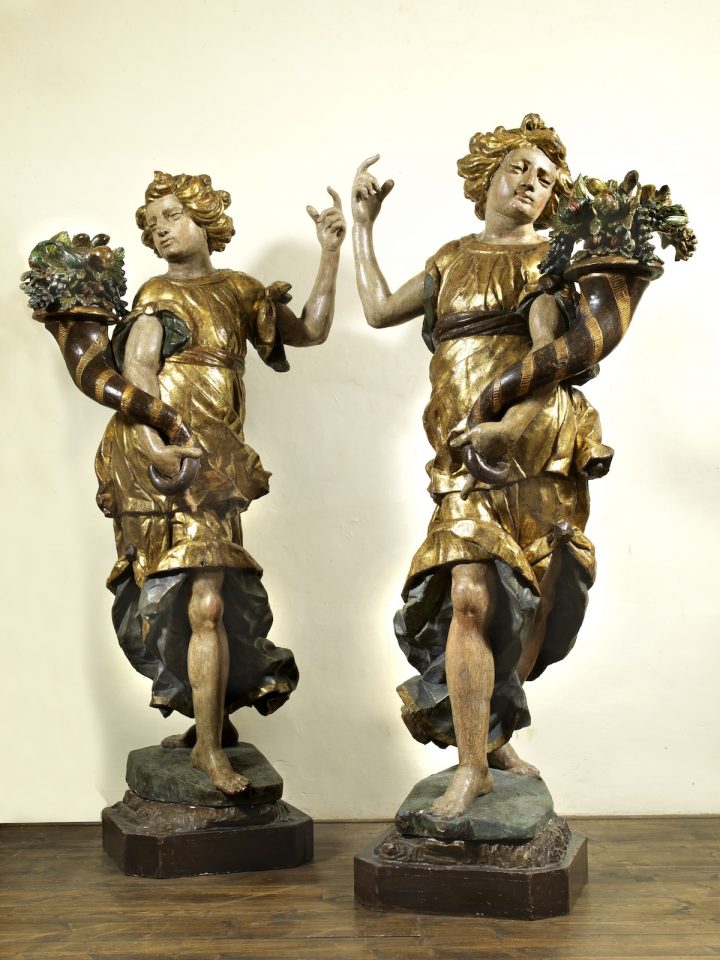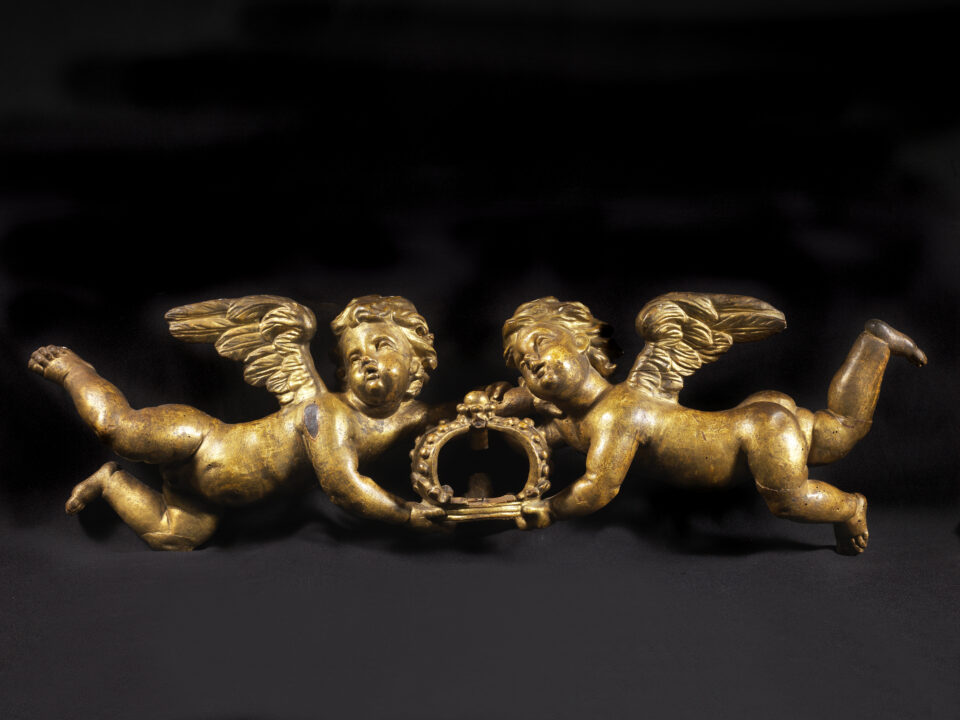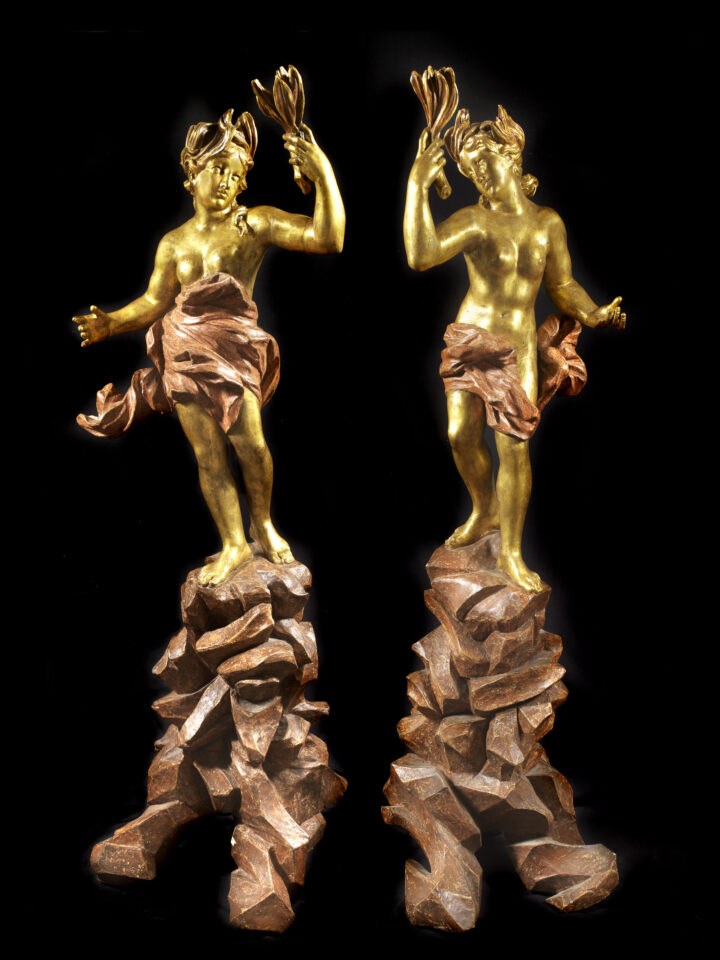ROME, 17TH CENTURY. BASES FROM THE 19TH CENTURY
Pair of monumental putti with cornucopias
sculpted wood with polychrome decoration, cm 300 h, cm. 94×52 bases
Two putti clothed in scanty draperies present cornucopias with fruits and flowers, symbol of abundance and fertility with a sinuous movement. The dolphin which wriggles at the feet of both is perhaps linked to the important customer: in fact, the two monumental Baroque sculptures originally come from the Barberini family, which became famous in the Seventeenth cen- tury by the very powerful pope Urbano VIII and which was particularly bound to this fabulous marine animal, which is furthermore quite diffused in Baroque art. For instance, monumental dolphins are depicted on the architectural quadrature of the large ceiling painted by Pietro da Cortona in the Palazzo Barberini in Rome (1630) and four dolphins appear on the base of Bernini’s famous Triton fountain (1643), which is not far from the famous palazzo. These sculptures were, according to an oral tradition, fixed on wooden bases with the coat of arms of the family which originally owned them, in the Nineteenth century in Paris, where the works appear to have been moved to due to the disposal of assets commenced by Cornelia Costanza Barberini, princess of Palestrina (1716-1797), and continued by her children.

